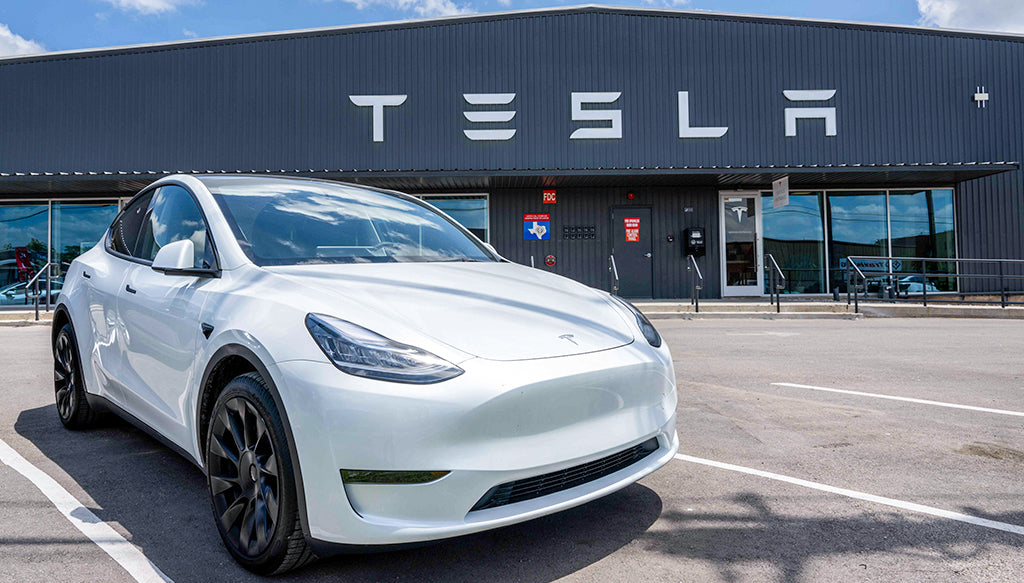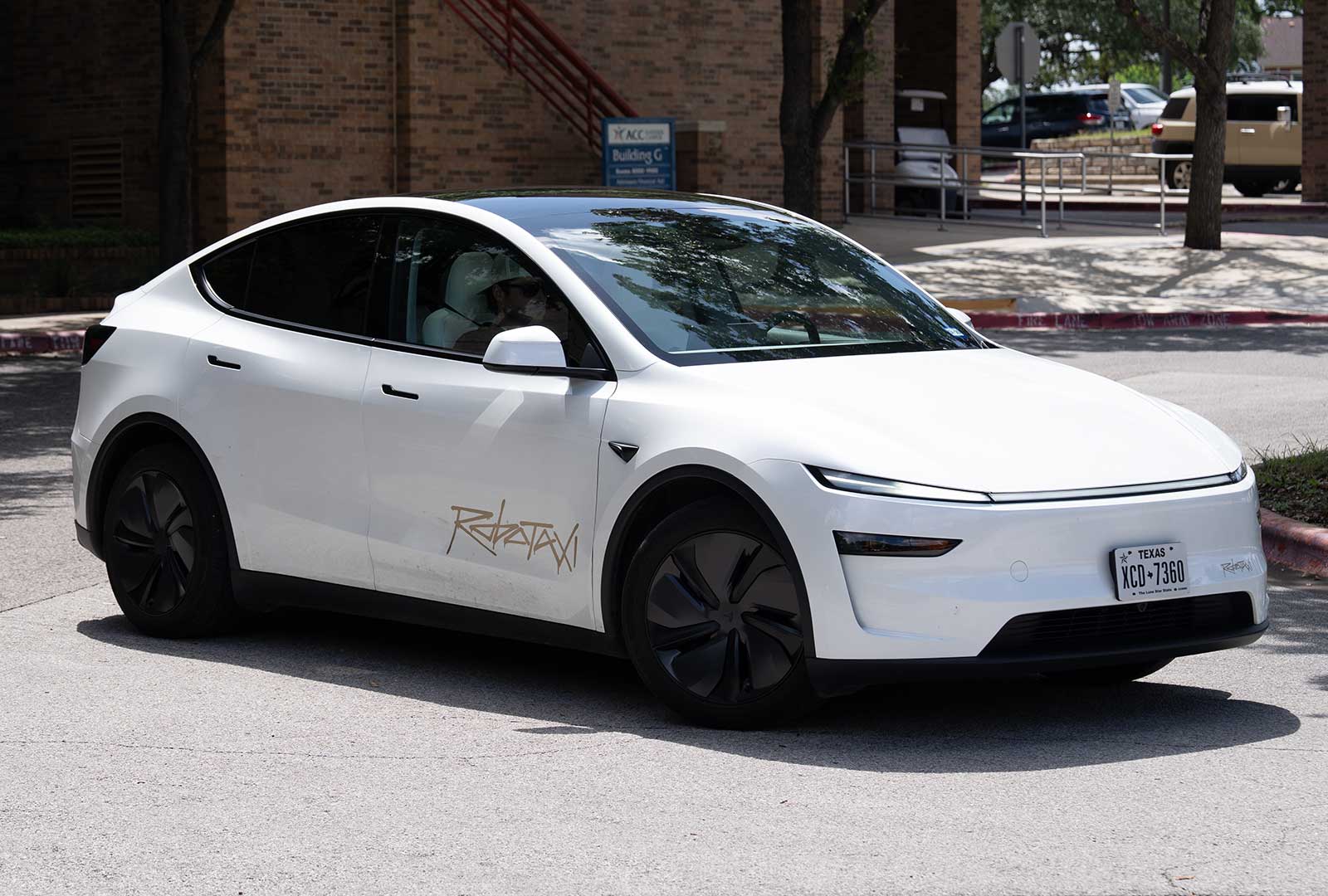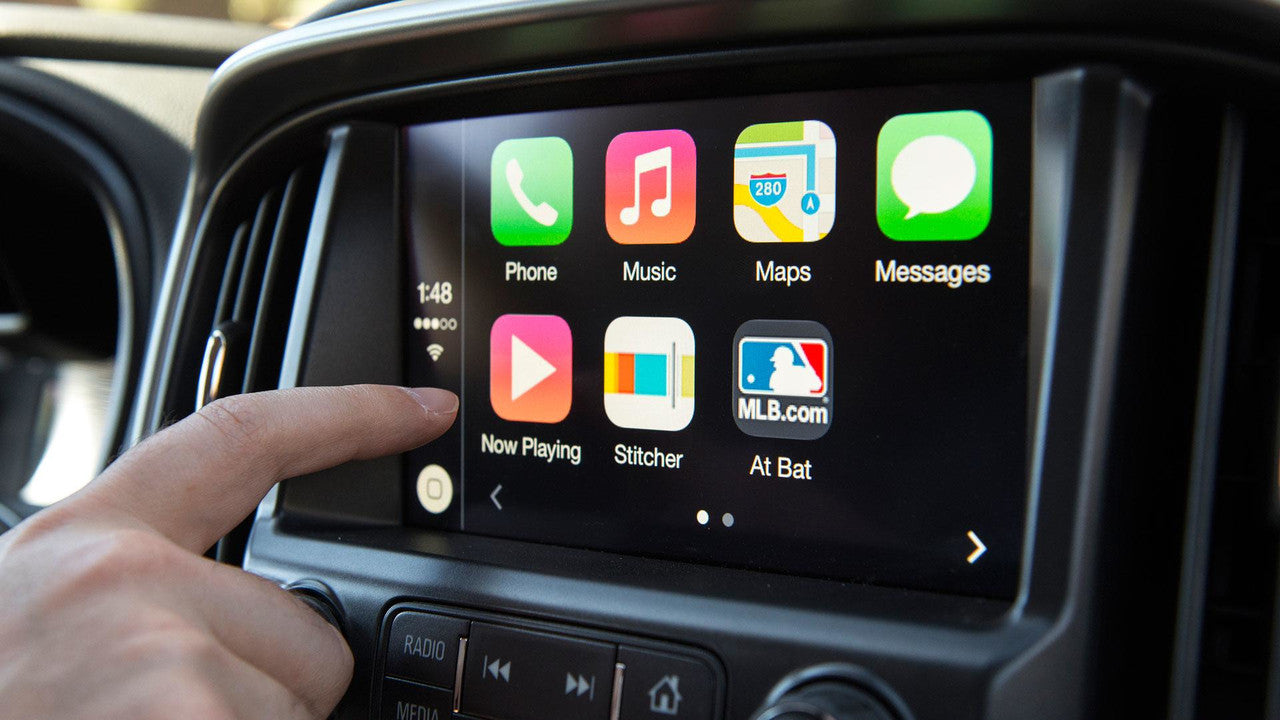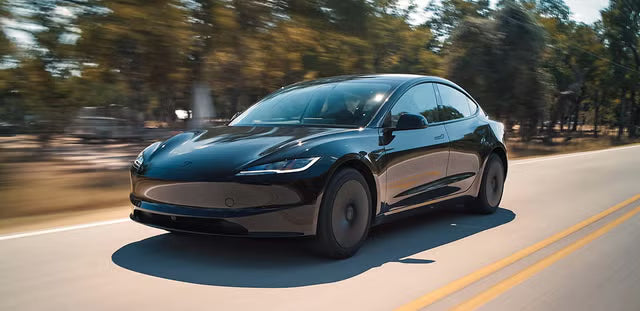Electric vehicles (EVs) have been gaining significant traction in recent years as a sustainable and efficient mode of transportation. With advancements in technology and increasing environmental consciousness, the EV industry is experiencing rapid innovation and development. In this article, we will explore the top EV innovations that are shaping the future of electric vehicles. From battery technology to charging infrastructure and autonomous driving, we will delve into the exciting advancements that consumers can look forward to. So, let's dive in and discover the top innovations that will transform the world of electric vehicles.
1.Advancements in Battery Technology:

1.1 Lithium-ion Battery Improvements:
In addition to improvements in energy density, researchers are working on enhancing the safety and longevity of lithium-ion batteries. This includes developing new electrolyte formulations, solid-state electrolytes, and advanced battery management systems to optimize performance and mitigate safety concerns.
1.2 Solid-State Battery Technology:
Solid-state batteries are seen as the next major breakthrough in battery technology. These batteries use solid electrolytes instead of liquid electrolytes, offering higher energy density, faster charging rates, and improved safety. Companies are investing heavily in research and development to overcome challenges and bring solid-state batteries to the market.
1.3 Increased Energy Density and Range:
Continued advancements in battery chemistry and design are focused on increasing the energy density of EV batteries. This translates to longer driving ranges on a single charge, reducing range anxiety and making EVs more practical for everyday use and long-distance travel.
1.4 Faster Charging Capabilities:
Efforts are underway to develop ultra-fast charging technologies that can deliver power to EVs at unprecedented rates. High-power charging stations, with outputs of 350 kW or more, are being deployed to significantly reduce charging times. These advancements aim to make EV charging as quick and convenient as refueling a gasoline vehicle.
1.5 Battery Lifespan and Durability:
Improving the lifespan and durability of EV batteries is crucial for the long-term viability of EVs. Research is being conducted to enhance battery materials, thermal management systems, and charging algorithms to minimize degradation and extend the lifespan of batteries. This will help reduce the cost and environmental impact of battery replacements.
2.Charging Infrastructure Expansion:

2.1 Public Charging Stations:
The growth of public charging infrastructure is vital to support the increasing number of EVs on the road. Governments, utility companies, and private enterprises are collaborating to install charging stations at key locations such as parking lots, shopping centers, and highways. This expansion aims to provide convenient access to charging for EV owners, whether they are at home, work, or on the go.
2.2 Fast Charging Networks:
Fast charging networks, such as Tesla's Supercharger network and third-party networks like Electrify America and Ionity, are being rapidly expanded to enable long-distance travel for EVs. These networks offer high-power charging stations strategically located along major highways, allowing EVs to recharge quickly during road trips.
2.3 Wireless Charging Technology:
Wireless charging, or inductive charging, is gaining attention as a convenient and user-friendly way to charge EVs. The technology allows EVs to charge simply by parking over a charging pad or mat, eliminating the need for physical cables. Efforts are underway to improve the efficiency and charging rates of wireless charging systems to make them more practical for widespread adoption.

2.4 Home Charging Solutions:
Many EV owners prefer charging their vehicles at home, making residential charging solutions crucial. This includes the installation of Level 2 charging stations in garages or driveways, which provide faster charging speeds compared to standard wall outlets. Smart charging solutions and load management systems are also being developed to optimize home charging and minimize the strain on the electrical grid.

2.5 Vehicle-to-Grid Integration:
Vehicle-to-grid (V2G) technology enables bidirectional energy flow between EVs and the power grid. It allows EVs to not only consume electricity but also supply excess energy back to the grid when needed. V2G integration can help balance grid demand, support renewable energy integration, and provide potential revenue streams for EV owners through energy services.

3.Range Extension and Performance Enhancement:
3.1 Extended Driving Range:
Automakers are continually striving to increase the driving range of electric vehicles. This involves advancements in battery technology, aerodynamics, weight reduction, and energy-efficient components. In the near future, EVs with ranges exceeding 400 miles (640 kilometers) on a single charge are expected to become more common.
3.2 High-Performance Electric Motors:
Electric motors offer instant torque and smooth acceleration, and advancements in motor design are further enhancing their performance. Higher power density motors are being developed, enabling EVs to achieve faster acceleration and higher top speeds. This is particularly evident in high-performance electric sports cars and supercars.
3.3 Enhanced Acceleration and Top Speed:
EVs are known for their quick acceleration due to the instant torque provided by electric motors. As technology progresses, EVs are becoming even faster, rivaling or surpassing the acceleration capabilities of traditional internal combustion engine vehicles. Additionally, some EVs are breaking top speed records, demonstrating the performance potential of electric powertrains.
3.4 Vehicle Weight Reduction:
Reducing the weight of EVs is a critical focus for automakers. Lighter vehicles require less energy to propel, leading to extended driving ranges and improved efficiency. The use of lightweight materials like carbon fiber, aluminum, and advanced composites, along with innovative vehicle design, helps reduce weight while maintaining structural integrity and safety.
3.5 Aerodynamics and Efficiency:
Streamlined aerodynamics play a significant role in enhancing the efficiency of EVs. Automakers are employing advanced aerodynamic features such as active grille shutters, underbody panels, and optimized body shapes to reduce drag and improve overall efficiency. These measures contribute to longer driving ranges and improved energy consumption.
4.Autonomous Driving Features:

4.1 Advanced Driver-Assistance Systems (ADAS):
ADAS technologies are becoming increasingly sophisticated, providing enhanced safety and convenience to EV drivers. Features such as adaptive cruise control, lane-keeping assist, automatic emergency braking, and blind-spot monitoring are standard in many modern EVs. These systems assist drivers, improve safety, and lay the groundwork for full autonomous driving.
4.2 Level 4 and Level 5 Autonomy:
Autonomous driving technology is rapidly advancing, with the aim of achieving higher levels of autonomy. Level 4 autonomy represents highly automated driving, where the vehicle can operate without human input in specific conditions and environments. Level 5 autonomy, the highest level, implies full autonomy in all driving scenarios, without the need for human intervention.
4.3 Sensor Technology and Perception Systems:
To enable autonomous driving, EVs rely on a combination of sensors, including cameras, lidar, radar, and ultrasonic sensors. These sensors provide a comprehensive view of the vehicle's surroundings and help detect and interpret road conditions, obstacles, pedestrians, and other vehicles. Continuous advancements in sensor technology are improving their accuracy, range, and reliability.
4.4 Safety and Regulatory Considerations:
The development of autonomous driving features necessitates robust safety measures and regulatory frameworks. Automakers and regulatory bodies are working together to establish standards and guidelines for autonomous vehicles. Safety considerations include fail-safe systems, redundancy, cybersecurity, and ethical decision-making algorithms.
4.5 Ride-Sharing and Mobility as a Service (MaaS):
Autonomous driving technology has the potential to revolutionize transportation systems. As autonomous EVs become more prevalent, ride-sharing services and Mobility as a Service (MaaS) platforms are expected to gain popularity. These services would allow users to access on-demand autonomous EVs, reducing the need for individual car ownership and optimizing resource utilization.
5.Sustainable Manufacturing and Materials:
5.1 Eco-Friendly Production Processes:
Automakers are increasingly focusing on sustainable manufacturing practices for EVs. This includes reducing energy consumption, minimizing water usage, and implementing renewable energy sources in production facilities. The adoption of eco-friendly manufacturing processes helps reduce the environmental impact of EV production.
5.2 Use of Recycled and Renewable Materials:
To enhance the sustainability of EVs, manufacturers are incorporating recycled and renewable materials in vehicle construction. This includes using recycled plastics, bio-based materials, and natural fibers for interior components and incorporating sustainable alternatives for traditional materials like leather and chrome.
5.3 Life Cycle Assessment and Environmental Impact:
Life cycle assessment (LCA) is employed to evaluate the environmental impact of EVs throughout their entire life cycle, including manufacturing, use, and disposal. LCA helps identify areas for improvement and enables manufacturers to make informed decisions regarding material selection, energy consumption, and waste management.
5.4 Circular Economy Practices:
The concept of a circular economy is gaining traction in the EV industry. It involves designing vehicles and components for durability, repairability, and recyclability. Additionally, recycling and remanufacturing processes are being developed to recover valuable materials from retired EV batteries, promoting a more sustainable approach to resource utilization.
5.5 Responsible Disposal and Recycling:
As the number of EVs on the road increases, the proper disposal and recycling of batteries become critical. Efforts are being made to establish efficient and environmentally friendly processes for the end-of-life management of EV batteries. This includes recycling valuable materials, such as lithium and cobalt, and safely disposing of hazardous components.
6.Connected and Intelligent Infotainment Systems:

6.1 Advanced Touchscreen Displays:
The integration of large, high-resolution touchscreen displays is becoming standard in EVs. These displays serve as the central control interface, providing access to various vehicle functions, entertainment options, navigation, and connectivity features. They enhance the user experience and offer intuitive and customizable interfaces.
6.2 Voice Control and Virtual Assistants:
Voice control capabilities and virtual assistants are being integrated into infotainment systems, allowing drivers to interact with their EVs using natural language commands. Users can control various functions, access information, make phone calls, and operate navigation systems, enhancing convenience and minimizing driver distraction.
6.3 Smartphone Integration and Connectivity:
Seamless integration with smartphones is a key feature in modern EV infotainment systems. This integration enables users to access their favorite apps, music streaming services, and navigation systems directly from their smartphones, ensuring a familiar and personalized experience within the vehicle.
6.4 Over-the-Air Updates:
EV manufacturers are increasingly implementing over-the-air (OTA) update capabilities, similar to those in smartphones. OTA updates enable the wireless delivery of software updates, bug fixes, and new features to EVs, enhancing functionality and allowing manufacturers to provide continuous improvements and enhancements throughout the vehicle's lifespan.
6.5 Enhanced Navigation and Entertainment Features:
EV infotainment systems offer advanced navigation features tailored for electric driving. This includes real-time charging station availability, range estimation, and route planning to optimize charging stops along a journey. Additionally, EV-specific entertainment options, such as energy consumption visualizations and gamified driving experiences, further enhance the overall driving experience.
7.Electrification of Different Vehicle Segments:

7.1 Electric Sedans and Hatchbacks:
Electric sedans and hatchbacks are becoming increasingly popular, offering zero-emission alternatives to traditional internal combustion engine vehicles. These EVs cater to a wide range of consumers, providing practicality, comfort, and efficient transportation options for daily commuting and longer trips.
7.2 Electric SUVs and Crossovers:
The electrification of SUVs and crossovers is gaining momentum, addressing the growing demand for larger, family-oriented vehicles. Electric SUVs and crossovers offer spacious interiors, ample cargo capacity, and the benefits of electric drivetrains, providing an eco-friendly option for those seeking utility and versatility.
7.3 Electric Pickup Trucks:
One of the highly anticipated developments in the EV industry is the introduction of electric pickup trucks. Several major automakers are investing in the development of electric pickups, aiming to combine the capabilities and ruggedness of traditional trucks with the efficiency and environmental advantages of electric powertrains.
7.4 Electric Buses and Commercial Vehicles:
Electric buses and commercial vehicles are making strides in urban transportation. Municipalities and fleet operators are transitioning to electric buses to reduce emissions and noise pollution. Additionally, electric delivery vans and trucks are gaining popularity in the logistics and transportation sectors, contributing to sustainable urban mobility.
7.5 Electric Two-Wheelers and Micro-Mobility Solutions:
Electric two-wheelers, such as electric bicycles and scooters, are gaining popularity as eco-friendly alternatives for short-distance commuting. Additionally, micro-mobility solutions like electric shared scooters and bicycles are becoming prevalent in urban environments, providing convenient and sustainable transportation options.








Share:
The Versatility and Benefits of EVDANCE J1772 EV Extension Cables
Tesla Battery Replacement Cost: Factors, Considerations, and Analysis
1 comment
I have 2 hours a day to use for charging due to my job and my car is a Tesla Y, so which type of charger should I choose?